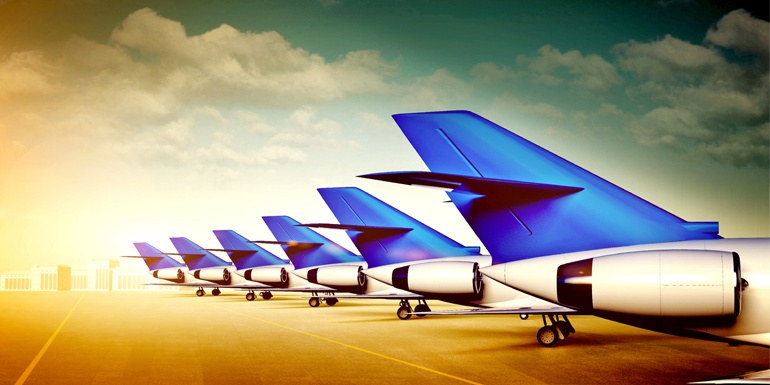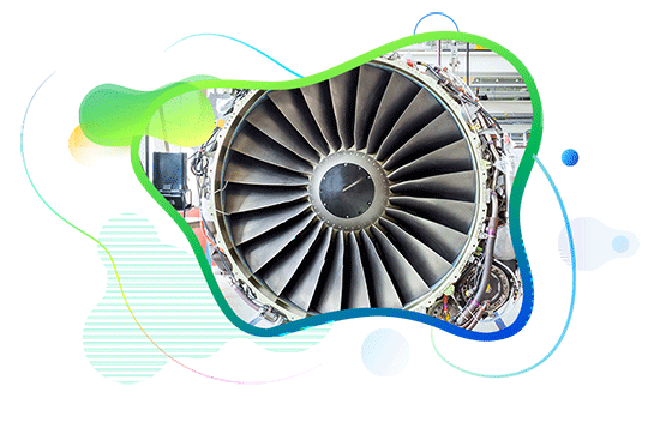
Right Sizing in Aviation Business & The Importance of Right IT Solution - Part 1
Published :

What is Right Sizing?
Throughout the aviation business history the focus has always been to drive down operating costs to remain profitable and competitive. As the airline industry have grown and diversified, the operators and carriers are facing continuing need to right-size aircraft capacity to meet the varied routes and passenger demands so as to keep themselves profitable.
As result of global economic downturns beginning from early 2008, all major carriers across the world have been reeling under heavy cost pressures, fuel price fluctuations and relentless competition. Due to this, the legacy or full service carriers, especially in Americas and Europe have started focusing more on replacing older aircraft with newer, more efficient aircraft to reduce unit costs and are exploring partnership/code sharing agreements with others like them and more popularly getting into franchise agreements with regional operators to increase their market penetration.
Now more than ever, the selection of the “right sized” aircraft for each market became important because though a larger aircraft will bring more overall revenues, but at lower RASM (Revenue per Available Seat Mile), as the additional seats need to be filled with low fare customers. A right-sized aircraft might result in up to 25-30% higher revenue per seat, but with fewer seats, may bring less overall revenue which can be offset to an extent with more frequencies. By consolidating and realigning network, using economically suited right sized aircraft and discarding excess/unhealthy capacities airlines can significantly improve their financial books.
So by carefully analyzing the market trends, realigning their route networks and selecting the right mix of right-sizing strategy involving the shedding of uneconomical domestic capacities, re-configuring higher capacity domestic aircraft for international services or into better route offerings, retiring the older and less-efficient aircraft to bring in new and better aircraft and partnering with the right regional operators, the airline operators can generate better bottom lines even in an uncertain economy
The Role of IT Systems
In addition to fleet changes, right-sizing operations may also warrant additional business realignments like merger and acquisition activities, facility reductions and expansions, third-party work considerations, and outsourcing. These constant changes requires the support of a robust IT solution —one that has enough functionalities to manage operational changes, is modular and flexible to handle the business growth and diversification, and has enough R&D and innovation support to match the industry trends.
The two popular strategies followed by airline operators are to either - operate a single aircraft type or model focusing on high frequency point to point services or - operate a varied fleet of multiple aircraft types through a hub and spoke setup.
Having a single fleet type has the advantage of significantly streamlining airlines operations by bringing in commonalities in maintenance requirements, inventory and crew needs thus keeping operating costs to a minimum. But this “all eggs in one basket” policy can stifle any network expansion plans and can hamper growth. So for such an airline right sizing would involve realigning capacities by bringing in variants of the same model and also operating different cabin configurations to cater to different markets and routes.
By having a mix type fleet allows the airline to fly into different types of markets and serve the right amount of people with the right size aircraft. Even if having a varied mix of aircraft types can add complexities in managing maintenance requirements and skills, inventory holding patterns and flight operation requirements, it allows the airline to respond to the market changes quickly by re-positioning its aircraft capacity to match the demands. Right sizing in these kind of operations would involve route consolidations, fleet realignments and excess capacity reductions
So when any airline goes into right sizing operations, it would certainly involve asset changes that would require the IT solution to manage either multiple aircraft make and models and/or multiple variants and multiple configurations of same type or model, sometimes even all. Which means that the incumbent IT solution must have the all the functionalities and capability to seamlessly accommodate multiple aircraft models and fleet sizes, along with their myriad requirements like configurations, maintenance support requirements, inventory stocking, labor skill sets etc. Obvious requirement therefore would be to have a robust configuration module along with configuration class based maintenance program setup that can precisely control and define the operational status and maintenance requirements of each aircraft in fleet, allowing stress free maintenance management and mission readiness. Additionally enhanced inventory management and material control functions, efficient engineering management capabilities, automated flight log integrations etc. along with strong integrations with accounting and invoicing are also necessary functionalities for the operators to achieve right amount of operational benefits from their aircraft fleet.
Stay tuned for the Part 2 of this blog which speaks about choosing the right IT solution and what's in store for the future!

All Rights Reserved. © Copyright 2023. Ramco Systems.